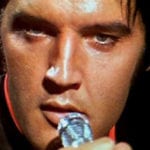 Technology
Technology  Technology
Technology  Humans
Humans 10 Everyday Human Behaviors That Are Actually Survival Instincts
 Animals
Animals 10 Animals That Humiliated and Harmed Historical Leaders
 History
History 10 Most Influential Protests in Modern History
 Creepy
Creepy 10 More Representations of Death from Myth, Legend, and Folktale
 Technology
Technology 10 Scientific Breakthroughs of 2025 That’ll Change Everything
 Our World
Our World 10 Ways Icelandic Culture Makes Other Countries Look Boring
 Misconceptions
Misconceptions 10 Common Misconceptions About the Victorian Era
 Mysteries
Mysteries 10 Strange Unexplained Mysteries of 2025
 Miscellaneous
Miscellaneous 10 of History’s Most Bell-Ringing Finishing Moves
 Technology
Technology Top 10 Everyday Tech Buzzwords That Hide a Darker Past
 Humans
Humans 10 Everyday Human Behaviors That Are Actually Survival Instincts
 Animals
Animals 10 Animals That Humiliated and Harmed Historical Leaders
Who's Behind Listverse?

Jamie Frater
Head Editor
Jamie founded Listverse due to an insatiable desire to share fascinating, obscure, and bizarre facts. He has been a guest speaker on numerous national radio and television stations and is a five time published author.
More About Us History
History 10 Most Influential Protests in Modern History
 Creepy
Creepy 10 More Representations of Death from Myth, Legend, and Folktale
 Technology
Technology 10 Scientific Breakthroughs of 2025 That’ll Change Everything
 Our World
Our World 10 Ways Icelandic Culture Makes Other Countries Look Boring
 Misconceptions
Misconceptions 10 Common Misconceptions About the Victorian Era
 Mysteries
Mysteries 10 Strange Unexplained Mysteries of 2025
 Miscellaneous
Miscellaneous 10 of History’s Most Bell-Ringing Finishing Moves
10 Movie Trailers That Gave Away Too Much
Movie promotors walk a tightrope, balancing the need to put butts in theater seats against revealing plot points the producers and director intended to be a surprise. Movie surprises are the subject of Twitter talk the next day and the basis for spreading Internet excitement for a film. And, with the advent of YouTube, movie trailers – and their spoilers – get far more exposure. Here are some movie trailers that gave away way too much. Warning: spoilers abound in this list. If you come across a movie you haven’t seen and want to, you might skip that entry.
Top 10 Amazing Audience Reactions
10 Speed (1994)
This 90’s thriller was so fun, many viewers could overlook its plot holes and less-than stellar acting. Nor did Speed have any plot twists to tickle the audience’s gray matter. But the trailer revealed virtually every important sequence in the movie, including the high-rise elevator rigged to drop its human payload and Officer Jack Traven (Keanu Reeves) attaching a cable to thwart its fall.
Then there’s the center piece: the bus rigged to explode at speeds lower than 50 mph. The trailer not only revealed this, but showed the bus successfully completing its unlikely jump across a gap in a highway overpass. And if you were worried about the bus passengers, the trailer even shows the bus blowing up as the passengers look on safely from an airport tram. And key parts of the finale’ on the subway is revealed, including its culminating blast through a wall. While that scene is eye-catching, it’s deflating to see it even before we’ve gotten our popcorn.
9 The Island (2005)
Sometimes a trailer reveals a film’s weaknesses. There are a number of potential reasons why Michael Bay’s 2005 venture – expected to be a summer blockbuster – was a huge flop. Was it – as the producers claimed—because Ewan McGregor and Scarlett Johansson were relative unknowns to the under-25 males this film targeted? If the producers meant their actors were not action stars, maybe, but McGregor had appeared just two months earlier in his third Star Wars movie and Johansson, at just 20, had appeared in films familiar to that age group such as Eight Legged Freaks (2002), and the cult classic Ghost World (2001).
Others speculate The Island failed because it was not the usual big-budget summer release in that it was an original screenplay that wasn’t a remake, a sequel or a TV, comic-book or video game adaption. And yet in the decade before The Island, at least a dozen original screenplays made it to the screen that were not remakes, adaptations or sequels and made $450 million in world wide sales or better. This includes such films such as Finding Nemo (2003), Independence Day (1996), The Sixth Sense (1999), The Incredibles (2004), Saving Private Ryan (1998), Gladiator (2000), The Matrix (1999), and The Titanic (1997).
Others speculate that The Island was just too much action and not enough substance. One could argue that’s precisely what under-25 males go to the movies to see, but a comparison of Bay’s previous films which were consistently explosion-heavy and substance-light is instructive. World wide, Armageddon (1998) made $550 million, The Rock (1996) $700 million, and Bad Boys (1995) $300 million. The Island made $163 million.
Perhaps a better explanation for its failure may be its publicity. Near its release date in the summer of 2005, the National Research Group polled the target audience and found few were even aware of the movie. So, Dreamworks spent $35 million in ads. And those trailers? Explosions – check. Car chases – check. Cool Sci-fi gadgets and vehicles – check. McGregor and Johansson rolling around in bed with a flash of Johansson’s cleavage – check. Plot point on the ethics of cloning – huh? And what was that about the ‘island’ doesn’t exist? They name the movie The Island and the island doesn’t exist? The trailer reveals what some think was the movie’s weakness. As movie critic Roger Ebert succinctly put it, The Island is a double-feature pretending to be a single one.
The Island’s first half takes place in a calm, isolated colony where computers measure the sodium in your urine and force you to eat healthy. The audience is fed that old dystopian trope about cloning for the sake of using the clone’s body, a clear rip-off of Matrix. In fact, the Island was so similar to a 1979 sci-fi horror film known as Parts: The Clonus Horror, Dreamworks was sued for copyright infringement and settled out of court. The second half is all action, and is satisfying, the pace giving the movie, says Ebert, a “breathless urgency.” He adds: “both halves work. Whether they work together is a good question. The more you like one, the less you like the other.”
8 Cast Away (2000)
This is another trailer that gives away every narrative point in the movie and does so in chronological order. It shows the main character, Chuck Noland (Tom Hanks), is an emotionally distant husband who is too-often physically distant from his wife as well. The trailer shows Hanks boarding a plane on Christmas, the plane crashing in the sea, Hanks washing up on an island, his efforts to feed himself, build a fire, his relationship with a Wilson volleyball, and his efforts to find shelter in a cave. It then went a step further.
Cast Away is a survival drama and it would seem self-evident that the survival of the protagonist would be the very thing a trailer should not reveal. Not only does the ad reveal that Hanks survives, it reveals how he gets off the island. Worse, it spoils the emotional impact of an important twist when Hanks returns to find his wife has remarried. It even shows the audience the final image of him in the movie at a remote, Texas crossroads.
In this case, making the trailer into a mini synopsis of the movie was on purpose and was supported by the director, Robert Zemeckis. “We know from studying the marketing of movies, people really want to know exactly every thing that they are going to see before they go see the movie,” he said. He admits that as “a movie lover and film student and a film scholar and a director” he doesn’t like the plot spoiled. But he feels he’s the minority: “What I relate it to is McDonald’s. The reason McDonald’s is a tremendous success is that you don’t have any surprises. You know exactly what it is going to taste like. Everybody knows the menu.”
7 Rope (1948)
You would think that Sir Alfred Hitchcock, the so-called ‘Master of Suspense,’ would have his bloody knickers in a bunch when the movie’s trailer diminishes his movie’s suspense. But in the case of Rope, Hitchcock wrote and filmed the trailer himself. The reason, he said, was because “I’m a little tired of seeing excerpts from next week’s picture flashed on the screen, and being told in the biggest words available not to miss the sensational coming attraction.” Hitch’s trailer opens with a bucolic park scene where two lovers banter playfully. This scene does not appear in the film and is meant as a contrast to movie’s disturbing overtones. As the man leaves the woman on the bench, Jimmy Stewart’s voice over declares she will never see him again. We then get a short straight-to-the-camera exposition by Stewart—that also doesn’t appear in the film – about the cast of characters, the murder and the two killers said to be inspired by the infamous real-life murderers Nathan Leopold and Richard Loeb.
Rope was Hitch’s most experimental work, filming it entirely in ten 10-minute longshots to give the feel of a stage play. Hitch may have been tempted to do the whole movie in one continuous longshot if it weren’t for the capacity limitations of the huge Technicolor camera. To heighten the suspense, the entire movie is presented in real time without editing and shot on one set with walls, props and furniture silently moved while the camera is rolling. Both Hitch and the actors hated it with the director declaring it “an experiment that didn’t work out.”
Rope is not a whodunit – we are told who the killers are up front – but it is a will-they-be –caught drama. It’s therefore surprising that Hitch spoiled this in his trailer. Through the entire movie we wonder if anyone will discover the body in the trunk under everyone’s nose (and under their dinner plates). But there in the trailer is Rupert Cadell (James Stewart) opening the trunk and this results in a climactic struggle for a pistol between Stewart and one of the killers, Brandon Shaw (John Dall), that ends with the pistol firing. One reviewer found this very effective claiming the audience doesn’t know if anyone was shot and is a “beautiful example of the skillful trailer, which only reveals so much of the plot that the anxiety in the audience is actually enhanced, instead of being diminished.” But a careful look at the trailer reveals the gun is pointing toward the floor when the trigger is pulled. Short of a character lying on that particular spot on the carpet, it’s safe to say no one was shot and the suspense is indeed “diminished.”
6 The Terminator Franchise (1984 to present)
The franchise rights to Terminator have been sold numerous times over the years, and the new owners, logically, wanted to recoup their money with a new movie. But the new writers, producers and directors were less interested in building on the timeline and story James Cameron envisioned, and more on creating something new that would sell. The results are, to date, six movies, a two-season TV series, three theme park attractions, and two webcasts, all with their own divergent storylines. The franchise’s timeline is as muddled as Britain’s royal family tree.
The Terminator movies have a long history of having their surprise plot points spoiled by the trailers, starting way back in 1991 with Terminator 2: Judgment Day. Today almost all of us know that Arnold Schwarzenegger switched from the villain in the first movie to a hero in the second, but way back in 1991, writer/producer/ director James Cameron went to great lengths to hide this twist with a bait and switch. For the first 30 minutes, we’re unaware that there are two Terminators, one to kill John Connor (Edward Furlong) and one to protect him. Nor do we know which is which. Clearly this is an important plot point for Cameron. And yet there it is in the trailer.
For Terminator 3: Rise of the Machines (2003), the twist was the ending which, unlike the previous movies, did not result in the thwarting of judgment day, clearly a new direction for the franchise. In the film, Skynet did take over the world’s nuclear weapons and launched them, initiating the feared holocaust. There were a number of different trailers for this movie, and one of them clearly shows the nuclear weapon exchange in the climax. This, however, is not necessarily a spoiler since T2 also had a nuclear holocaust scene that turned out to be a dream.
Terminator: Salvation (2009) was meant as a sequel to Rise of the Machines, showcasing the post-apocalyptic war with the machines. Director McG tried to hide the fact that a mysterious central character, Marcus Wright (Sam Worthington), was himself a Terminator, although anyone familiar with the franchise probably could have guessed it. They didn’t have to, as the trailer revealed it.
A sequel to Terminator: Salvation was cancelled when the owners of the franchise filed for bankruptcy and the new owners decided to take the franchise in still another direction by revisiting the events of the first two films. The result – Terminator: Genisys (2015) – became the second most successful movie in the franchise behind T2. Part of the reason was it saw the return of Schwarzenegger (he wasn’t in Salvation). The marketing department couldn’t wait to reveal in their trailer that Schwarzenegger was going to fight his CGI younger self in this movie. But their other spoiler was far worse: the usual hero John Connor (Jason Clarke) would not only be a villain, but a Terminator. The director, Alan Taylor, wasn’t pleased. “They [the marketing department] were concerned that people were misperceiving this as a kind of reboot, and none of us wanted to reboot two perfect movies by James Cameron,” Taylor said, adding they decided that spoiling the twist was the best way to show this.
Despite Genysis relative box-office success, it was clear the franchise was tired and drawing a tepid response from the critics and audience. The franchise was in danger of suffering its own judgment day. So Cameron decided to produce the sixth film, hoping to renew interest in his creation. To do that, he pulled out all the stops, reuniting with Schwarzenegger and Linda Hamilton to reprise their roles for the first time since T2 and garnering a huge budget. Marketing made no secret that Terminator: Dark Fate (2019) was the sequel to T2, hoping some of the magic from the earlier film would draw crowds. They even released the first trailer on August 29, 2019, the 22nd anniversary of T2’s supposed judgment day.
Instead the trailers revealed the stark differences between it and T2. The earlier film was imaginative, the special effects innovative, the story interesting. In Dark Fate’s trailer, the CGI effects looked unfinished and rushed (post-production was, after all, still on-going), the characters were meh, and the story seemed unnecessarily convoluted, possibly to hide the fact it was identical to the previous 5 films: machines send machines into past to kill a human integral to the future. What’s more, the trailer’s omission of one of the franchise’s more interesting characters – John Connor – spoiled yet another plot twist. The trailer told audiences that there’s nothing new to see here except the loss of a beloved character. They responded in kind. The movie had to make at least $450 million just to break even. It made $250 million worldwide, making it the second worst-selling Terminator movie. Yep, that’s right: all three sequels to T2 sold better than Dark Fate. And while Dark Fate was released just months before the COVID pandemic closed theaters, it was clear long before that it was a box-office flop.
5 The Cabin in the Woods (2012)
The Cabin the Woods is, as producer/co-screenwriter Joss Whedon put it, “a very loving hate letter” to the horror movie genre. Whedon said he and Director Drew Goddard felt the need to write the script after their disappointment with the direction horror movies were going. “The things that I don’t like are kids acting like idiots, the devolution of the horror movie into torture porn and into a long series of sadistic comeuppances,” Whedon added. “Drew and I both felt that the pendulum had swung a little too far in that direction.” The result was to turn horror tropes on their heads.
The movie is sprinkled with nods to classic horror. The decrepit cabin is reminiscent of the cabin in Evil Dead complete with a creepy cellar. The similarities to Evil Dead are rampant: there are five young adults who fit into typical horror archetypes; they bring the curse upon their heads with an incantation; and when they try to escape, they are thwarted by a ravine. Then there’s a lake that reminds viewers of Crystal Lake of the Friday the 13th franchise. But the film’s strength is its freshness. There’s the lab geeks who manipulate everything electronically, including spraying pheromones to elicit the usual sexual encounter. There’s the ancient evil deities who require the blood of the kids, and sends monsters to make it flow.
As you might guess, The Cabin in the Woods relies heavily on surprises. Even its laughs fall flat if they’re revealed ahead of time. And yet, that’s exactly what the trailer does. The monsters, the lab geeks, the nods to other horror movies are all there in the trailer. Which is why Whedon, when he screened the movie for the South by Southwest festival a month before the theatrical release, warned the audience to not reveal the movie’s details. One of the reporters at the event added no one should watch the trailer either.
4 Groundhog Day (1993)
The danger in promoting comedies is that it’s tempting to load trailers with every good joke and gag in the movie. In the case of Groundhog Day, promoters gave into temptation. In just 150 seconds, the trailer coughs up virtually every decent joke that comes out of Phil Connors’ (Bill Murray’s) mouth. What’s more, the trailer focuses more on the sight gags such as Murray stepping into a puddle, stepping in front of the bus, and helping a groundhog steer a car. This gives the viewer the impression this is a slapstick comedy which it’s definitely not.
Then there’s the voice-over spoilers. Clearly the promoters had little faith in the intelligence of the audience, because the voice-over unnecessarily explains that Murray must relive February 2 over and over again and tells us this gives him the opportunity to “get it right.” The voice-over tells us Murray can live his day without repercussions, eating what he wants to, doing whatever he wants to, sleeping with whoever he wants to. It even spoils the results of the movie’s love interest by telling us that Murray will get out of this loop by getting it “right” with Rita Hanson (Andie MacDowell), ostensibly by manipulating MacDowell into falling for him.
3 Arlington Road (1999)
Most of the films on this list were at least relatively successful at the box office, which supports the contention that audiences do – to some extent—want spoilers in their trailers. Not so with the thriller Arlington Road. This is a shame because Arlington Road deserved a better trailer.
Michael Faraday (Jeff Bridges) lives on Arlington Road and is a college professor who teaches a course on homegrown, American terrorists. His late wife was an FBI agent killed while trying to apprehend an extremist family in a standoff reminiscent of Ruby Ridge. Bridges even takes his class on field trip to the site where is wife died, something that in the real world would have gotten him trouble. But clearly Bridges is still mourning – even obsessing over – his wife’s death.
Then Oliver (Tim Robbins) and Cheryl (Joan Cusack) Lang move into a neighboring house on Arlington Road and Bridges begins to suspect they might be a family of terrorists, plotting to blow up a government building. No one, including his wife’s fellow FBI agents believe him, knowing full well of his obsession with these groups. The ambiguity of whether the Langs are or are not terrorists is the driving force of the first half of the movie. But the trailer focuses way too much on the second half of the movie when the ambiguity no longer exists and Bridges races against time to save his family and stop a catastrophe. Essentially the trailer reveals whether the Langs are terrorists and there’s little point in even watching the first act of the movie. Fortunately, a final twist is not revealed.
2 Catfish (2010)
Every movie trailer we’ve discussed thus far have lured or tried to lure audiences by what they show. Sometimes, however, trailers are edited to fool the audience into thinking the movie was one genre, when it’s actually another. The gangster comedy Kangaroo Jack (2003) had a trailer with a talking and rapping kangaroo, making it appear to be a family film. It wasn’t. Kangaroo Jack rapped and talked only briefly in a hallucination and the film would likely have bombed if the trailer was more honest. If you went by the trailer for Pans Labyrinth (2006), you’d think the movie was a fairytale-like fantasy, instead of the psychological horror film it really was. Oh, and it was in Spanish which the trailer hides by showing non-dialogue scenes. Or that Gremlins (1984) was just another Steven Spielberg family-friendly film like E.T.: The Extra-Terrestrial (1982) instead of the sometimes gruesome, violent horror comedy it was. Director Joe Dante even admitted that they purposely imitated the colors and style of E.T. in the Gremlins ads to make it seem family-friendly. But the most egregious example of the bait-and-switch trailer is Catfish from 2010.
Banking on the success of Paranormal Activity which had its worldwide release the previous year, the trailer starts with what appears to be found-footage of two New York brothers, one of whom has struck up an on-line relationship with Megan from Gladstone, Michigan. We spend 90 seconds learning about the brothers and Megan, but then the boys take a road trip to Gladstone. The soundtrack becomes darker, more sinister while the brothers drive up at night to Megan’s family home and one brother admits he’s “scared.” Then, as a brother walks up to a darkened garage and peers into an opaque window, a quote of a critic is displayed: “the final forty minutes of the film will take you on an emotional roller-coaster ride that you won’t be able to shake for days.” This is followed by more critic quotes such as “a shattering conclusion” and “the best Hitchcock film Hitchcock never directed.” We’re left with the impression Megan is not who she claims to be and what follows is a suspense-filled horror movie. Wrong.
Catfish is actually a documentary about Nev who has an on-line relationship with a woman who did, indeed, catfish him with a fake name and pictures of a professional model. Her real name is Angela and she is… drum roll… an older woman forced to stay at home to care for her disabled stepsons and lives vicariously through on-line romances. That’s it. That’s the big reveal we won’t “be able to shake for days,” that’s the “shattering conclusion.” There are no blood baths, no stalkers or killers, no Hitchcockian twists. It’s even reported that Nev and Angela are still Facebook friends.
1 Avengers: Endgame/Spider-man: Far From Home (2019)
Avengers:Endgame may be the most anticipated film since Star Wars VII: The Force Awakens opened four years before. It also may have relied more heavily on surprising the audience than the typical movie, perhaps any movie. This is because it’s the conclusion to the cliff-hanger at the end of Avengers:Infinity War (2018) where the villain, Thanos (Josh Brolin) , literally wipes half the universe’s inhabitants from existence, among them Spider-man (Tom Holland) and Nick Fury (Samuel L. Jackson).
Co-directors Anthony and Joe Russo went to great lengths to keep Endgame’s surprises secret. For one thing there was only one draft of the full script, kept on an iPad that could erase the script with the press of a button, the iPad kept in a secure room with only select people given access. And the actors were not allowed to know any plot points beyond the scenes they shot. Holland had a CGI fight scene and he wasn’t told who he was fighting.
The Russo brothers even altered the movie’s trailers to hide secrets in the movie. They did this in Infinity War when its trailer featured the Hulk and the Avengers charging through Wakanda’ s forests toward the film’s final battle. The Hulk wasn’t in this charge, indeed wasn’t in almost all of the film. Near the opening of Endgame, Tony Stark (Robert Downey Jr.) and Nebula (Karen Gillan) are marooned in space without food or fuel for the ship Benatar. Downey’s body is digitally made to look thinner with reduced muscle mass to simulate the fact he’s been starving for 22 days. In the trailer his body is unaltered. In other trailers, the five-year time jump in the movie is hidden by changing Black Widow’s (Scarlett Johansson’s) hair color and style, digitally crowning Captain Marvel’s (Brie Larson’s) head with a helmet to hide her new hairdo, and digitally giving Thor (Chris Hemsworth) a make-over from his heavier, slovenly look. In other trailers Thor’s lost Mjölnir hammer is digitally removed from his hand, as is the Infinity Gauntlet from Hawkeye’s (Jeremy Renner’s) clutches.
Despite this, the Endgame trailers did spoil a few things. In one scene featuring Renner running from an explosion, the limbs and torsos of Thanos’ gruesome-looking Outriders were edited out of the blast in the 2-D trailer. But they forgot to edit them out in the 3-D trailer, telling fans that the Avengers would indeed fight Thanos again.
But not all spoilers came from Endgame trailers. Sony had owned the movie rights to Spider-man since 1999 and subsequently launched three versions of the superhero starring Tobe Maguire, Andrew Garfield, and Tom Holland. Holland’s debut in Captain America: Civil War (2016) signaled a deal between Sony and Disney/Marvel to have Spider-man cross-over into the Marvel Cinematic Universe (MCU). Which is why Holland’s Spider-man appeared – and died – in Infinity War. But when Sony decided to release Spider-man: Far From Home in July 2019, just months after Endgame, the Russo brothers knew that it would spoil the surprise that Spider-man would be rescued from oblivion. And when Far From Home’s first trailer was released in mid-January, three months before Endgame hit theaters, it not only revealed Spider-man came back, so did Nick Fury. Clearly the heroes “snapped” out of existence would return. The second trailer, released a week and half after Endgame’s premiere, further revealed that Spider-man was mourning the death of Ironman, spoiling Endgame’s ending for those who hadn’t seen it yet.
If these spoilers did not make the growing tension between Sony and Disney/Marvel worse, they at least were indicative of it. The culprit of the tension was money. Disney wanted more of the Spider-man receipts and Sony did not want to share or at least share more. In late August, the two parties split, throwing the cross-over into oblivion. But the fan base responded so loudly, that a month later Sony and Disney/Marvel signed an agreement to keep Spidey in the MCU. For now.
Top 10 Controversial Movie Trailers
About The Author: Steve is the New York Times best-selling author of “366 Days in Abraham Lincoln’s Presidency” and a frequent contributor of Listverse.








